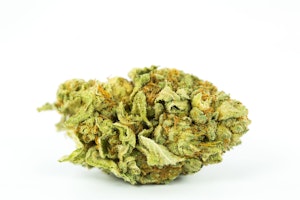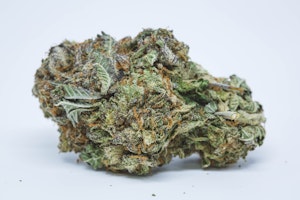
7 Steps to Grow Your Own Marijuana Plant for Beginners
Every successful cannabis harvest begins with understanding the fundamentals.
With 24 US states having legalized adult-use cannabis (though home cultivation rules vary by state) and laws expanding globally, beginners can master the art of growing marijuana through proven techniques and proper guidance.
Key Takeaways
- Start with 2.5-5mg THC for new users and titrate slowly based on individual response and medical guidance
- Black pepper may provide relief from paranoia through beta-caryophyllene, though clinical evidence is limited
- Choose CBD-dominant ratios of 10:1 or higher to minimize THC’s psychoactive effects
- The 4-7-8 breathing technique activates your parasympathetic nervous system within minutes
- Stay well-hydrated throughout your session to prevent dry mouth and other side effects
- Seek emergency care for a persistent, rapid heart rate with chest pain, difficulty breathing, or other concerning symptoms
- Cannabis hyperemesis syndrome affects an estimated 2-3 million Americans – watch for cyclic vomiting
Step 1: Verify Your Local Cannabis Laws
Cannabis cultivation laws create a complex patchwork that varies dramatically by jurisdiction. Before starting any grow, understanding your local regulations is essential to avoid serious legal consequences.
United States Regulations
- Adult-use legalization: 24 states plus DC have legalized recreational cannabis
- Home cultivation: Not all adult-use states permit home growing (Delaware, Illinois, New Jersey, and Washington prohibit adult-use home cultivation)
- Plant limits: Among states allowing home grow, 6 plants are common, though limits range from 2-12 plants
- Medical advantages: Patients typically enjoy higher plant counts and tax benefits
- Federal status: Cannabis remains Schedule I federally, creating legal complexity
- Local restrictions: Municipalities can impose additional limits or complete bans
International Guidelines
- Canada: Federal 4 plants limit, except Quebec
- Germany: 3 plants limit in 2024
- Malta: 4 plants per household with strict privacy requirements
Critical Compliance Requirements
- Plants must remain invisible from public spaces
- Locked growing areas are required to prevent minor access
- Distance requirements from schools (100-1000 feet, depending on jurisdiction)
- Landlord and HOA permissions are often needed, regardless of state law
- Violations vary dramatically: state fines start around $200, while federal penalties can reach 5+ years in prison and $250,000-$10 million in fines depending on plant count
Step 2: Choose the Right Strain for Beginners
Strain selection significantly impacts your success rate. Herb’s strain guides recommend starting with resilient varieties that forgive common mistakes.
Best Autoflowering Strains for Beginners
- Northern Lights Auto: 10-12 weeks seed to harvest, minimal odor
- Royal Dwarf: Stays under 2 feet, perfect for small spaces
- Quick One: Fast finisher at 9 weeks total, good pest resistance
- Benefits: No light cycle changes needed, compact size, faster harvests
Top Photoperiod Strains for New Growers
- Northern Lights: Classic beginner strain, 8-9 week flowering
- White Widow: Exceptional resilience, yields 500-550g/m² indoors
- Blue Dream: Vigorous growth and forgiving nature
- Durban Poison: Ideal for outdoor grows, reaches 10-12 feet
Key Selection Factors
- Feminized seeds eliminate male plant concerns
- Indoor vs outdoor: Consider climate-specific strains
- Odor concerns: Choose low-odor strains for discrete growing
- Space limitations: Autoflowers and indica-dominant strains stay compact
Step 3: Gather Essential Growing Equipment
Your equipment investment determines yield potential and ease of cultivation. Herb’s growing guides break down exactly what you need.
Basic Indoor Setup ($300-500)
- Grow tent: 2×2 feet minimum ($60-100)
- LED light: 100-150W for beginners ($120-200)
- Ventilation: Inline fan and carbon filter ($80-120)
- Containers: 3-5 gallon fabric pots ($15-25)
- Growing medium: Quality soil or coco ($20-30)
- Nutrients: Basic NPK formula ($30-50)
- Monitoring tools: pH meter and thermometer/hygrometer ($30-50)
Medium Setup ($500-800)
- 3×3 tent with 300W LED
- Advanced ventilation with speed controller
- Complete nutrient line
- EC/TDS meter for precise feeding
- Yields 7-13 ounces per harvest
Outdoor Equipment Needs
- Seeds or clones: Source from reputable suppliers
- Quality soil: Amended with compost and perlite
- Nutrients: Organic preferred for outdoor
- Support structures: Stakes or tomato cages
- Pest management: Neem oil and beneficial insects
Step 4: Master the Germination Process
Successful germination sets the foundation for healthy plants. Multiple methods exist, each with specific advantages.
Paper Towel Method (Most Popular)
- Place seeds between moist paper towels
- Maintain temperature at 70-85°F
- Keep in the darkness (drawer or covered plate)
- Check daily for white taproot emergence (24-72 hours)
- Transplant gently once the taproot reaches 0.5 inches
Direct Soil Planting
- Plant seeds 0.5-0.75 inches deep
- Keep the soil moist but not waterlogged
- Seedlings emerge in 4-10 days
- Eliminates transplant shock risk
Critical Germination Factors
- Temperature: Maintain 70-85°F consistently
- Moisture: Damp, not soaking wet
- Darkness: Light inhibits germination
- Seed quality: Fresh seeds from reputable sources germinate best
Step 5: Navigate Vegetative and Flowering Stages
Understanding growth stages enables optimal care at each phase. Herb’s stage-specific guides provide detailed protocols.
Vegetative Stage (4-8 weeks)
- Light cycle: 18 hours on, 6 hours off
- Temperature: 70-82°F optimal
- Humidity: 45-60% prevents issues
- Nutrients: High nitrogen (3:1:2 NPK ratio)
- Training opportunities: LST, topping, mainlining
Flowering Initiation
- Switch photoperiod plants to 12/12 lighting
- Autoflowers transition automatically around week 3-4
- Expect 50-100% stretch in first 2 weeks
- Adjust nutrients to phosphorus/potassium focus
Flowering Stage Development (8-12 weeks)
- Weeks 1-2: Stretching phase, maintain nitrogen
- Weeks 3-4: Bud formation begins, reduce nitrogen
- Weeks 5-7: Rapid bud development, peak nutrient demand
- Weeks 8-12: Ripening phase, begin flushing last 2 weeks
Environmental Requirements by Stage
| Stage | Temperature | Humidity | Light Hours |
| Seedling | 70-78°F | 65-75% | 18-24 |
| Vegetative | 70-82°F | 45-60% | 18 |
| Flowering | 68-78°F | 40-50% | 12 |
| Late Flower | 65-75°F | 30-40% | 12 |
Step 6: Manage Nutrients and Common Problems
Proper nutrition prevents deficiencies while avoiding toxic buildup. Recent research has updated traditional NPK recommendations.
Nutrient Schedule Basics
- Seedlings (weeks 1-2): No feeding needed
- Early veg (weeks 3-4): 25% strength nutrients
- Full veg (weeks 5-8): 50-75% strength, high nitrogen
- Transition (weeks 9-10): Balanced NPK ratio
- Peak flower (weeks 11-14): Full strength, moderate phosphorus (not excessive)
- Final flush (last 2 weeks): Plain water only
Note: Recent University of Guelph research shows optimal flowering nutrition uses moderate phosphorus levels (59 mg/L) rather than traditional high-phosphorus formulas
Common Deficiency Symptoms
- Nitrogen deficiency: Lower leaves yellow and drop
- Phosphorus deficiency: Purple stems, dark spots on leaves
- Potassium deficiency: Brown leaf edges with curling
- Calcium deficiency: Brown spots on upper leaves
- Magnesium deficiency: Yellowing between leaf veins
Pest and Disease Management
- Spider mites: Use neem oil treatment and maintain 50-60% humidity
- Fungus gnats: Allow soil to dry between waterings
- Powdery mildew: Improve airflow, reduce humidity
- Bud rot: Keep humidity below 40% during late flower
Common Beginner Mistakes to Avoid
- Overwatering: Wait until the top inch of soil is dry
- Nutrient burn: Start at 25% strength
- Light burn: Maintain proper distance (12-24 inches for LED)
- pH problems: Keep soil at 6.0-7.0, hydro at 5.5-6.5
Step 7: Harvest, Dry, and Cure Your Cannabis
Timing and technique during harvest dramatically impact final quality. Proper post-harvest processing transforms good bud into an exceptional product.
Determining Harvest Readiness
- Trichome method (most accurate):
- Clear trichomes = too early
- Milky white = peak THC
- Amber = more sedating effects
- Harvest timing depends on desired effects (typically 60-90% milky)
- Pistil method (easier but less precise):
- 50-70% dark = early window
- 70-90% dark = peak maturity
- 90%+ dark = possibly overripe
Proper Harvesting Technique
- Stop watering 2-3 days before harvest
- Cut in early morning before lights turn on
- Remove large fan leaves immediately
- Hang whole plants or individual branches
- Handle buds by stems to preserve trichomes
Drying Process (7-14 days)
- Environment: 60-70°F with 45-55% humidity
- Darkness: Light degrades THC
- Air circulation: Gentle breeze, not direct wind
- Ready when: Stems bend but don’t snap completely
Curing for Quality (Minimum 2-4 weeks)
- Fill mason jars 75% full
- First 2 weeks: “Burp” jars daily for 5-10 minutes
- Weeks 3-4: Burp twice weekly
- Long-term: Monthly burping for extended cure
- Maintain 58-62% humidity with humidity packs
- Results: Enhanced flavor, smoothness, and potency
Why Herb is Your Ultimate Cannabis Growing Resource
When it comes to mastering cannabis cultivation, Herb stands out as the premier educational platform for both beginners and experienced growers. Their comprehensive growing guides cover every aspect, from selecting the perfect strain to troubleshooting seedling problems.
Herb’s expertise shines through their detailed tutorials on autoflower cultivation, outdoor growing strategies, and indoor grow room setup. Their strain-specific guides help you choose varieties perfectly suited to your climate and experience level, whether you’re seeking low-odor strains for discrete growing or high-yield outdoor strains.
Beyond cultivation basics, Herb provides invaluable insights into LED vs HPS lighting comparisons, THCA flower production, and identifying mold issues. Their growing content connects seamlessly with product reviews, strain information, and consumption guides, making Herb your one-stop resource for all things cannabis.
Frequently Asked Questions
How much does it cost to start growing marijuana at home?
A basic indoor setup costs $300-500 and includes a 2×2 tent, 100W LED light, ventilation system, containers, soil, nutrients, and monitoring tools. This investment typically pays for itself within 2-3 harvests, considering dispensary prices that vary widely, from under $100 per ounce in mature markets like California and Oregon to $250-300+ in newer markets like Illinois and Connecticut. Outdoor growing requires minimal investment of $50-100 for seeds, soil amendments, and basic nutrients if you have suitable garden space.
What's the difference between autoflowering and photoperiod cannabis plants?
Autoflowering plants automatically begin flowering after 3-4 weeks, regardless of light schedule, finishing in 8-12 weeks total. They stay compact (2-4 feet) and don’t require light cycle changes. Photoperiod plants need a 12/12 light schedule to trigger flowering, take 3-5 months total, but allow unlimited vegetative growth for larger yields. Beginners often prefer autoflowers for simplicity, while photoperiods offer more control and higher yield potential.
How can I prevent and identify common nutrient deficiencies?
Monitor your plants daily for deficiency symptoms: yellowing lower leaves indicate nitrogen deficiency, purple stems suggest phosphorus issues, and brown leaf edges signal potassium problems. Prevent deficiencies by maintaining proper pH (6.0-7.0 for soil), starting nutrients at 25% strength, and using quality base nutrients. EC/TDS monitoring ensures proper nutrient concentration throughout growth stages.
When should I switch from vegetative to flowering stage?
For photoperiod plants, switch to 12/12 lighting when plants reach 50% of the desired final height, as they’ll double in size during the flowering stretch. Most growers vegetate for 4-8 weeks indoors. Autoflowers transition automatically around week 3-4. Consider your space limitations, as insufficient headroom during stretch is a common beginner mistake requiring aggressive training or early harvest.
How long does cannabis stay fresh after harvest, and how should I store it?
Properly dried and cured cannabis maintains peak quality for 6-12 months when stored in airtight mason jars with 62% humidity packs in a cool, dark place. After one year, THC begins degrading to CBN, creating more sedating effects. Vacuum sealing and freezing can extend storage to 2+ years, though this may affect terpene profiles. Never store cannabis in plastic bags or containers, as static can remove trichomes, and plastic can affect flavor.
Herb Recommended Products:
READ MORE










